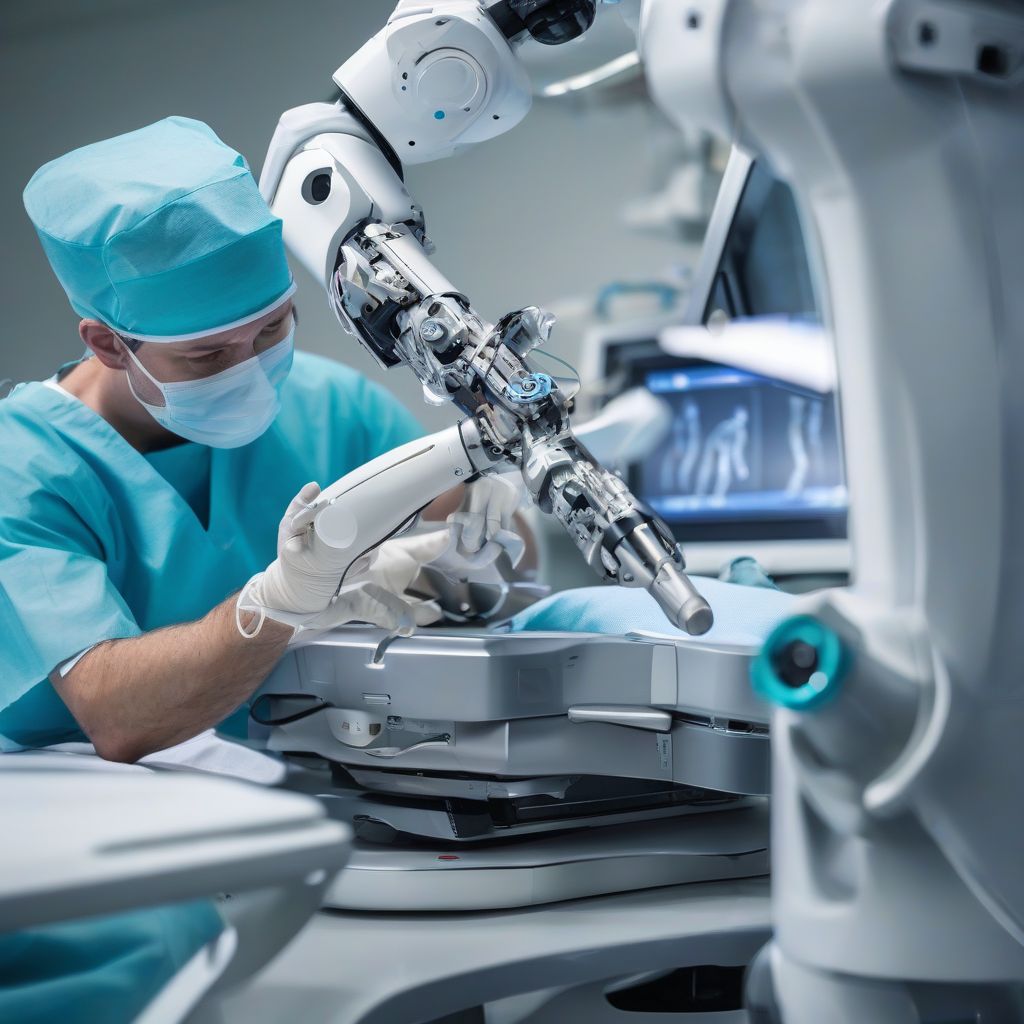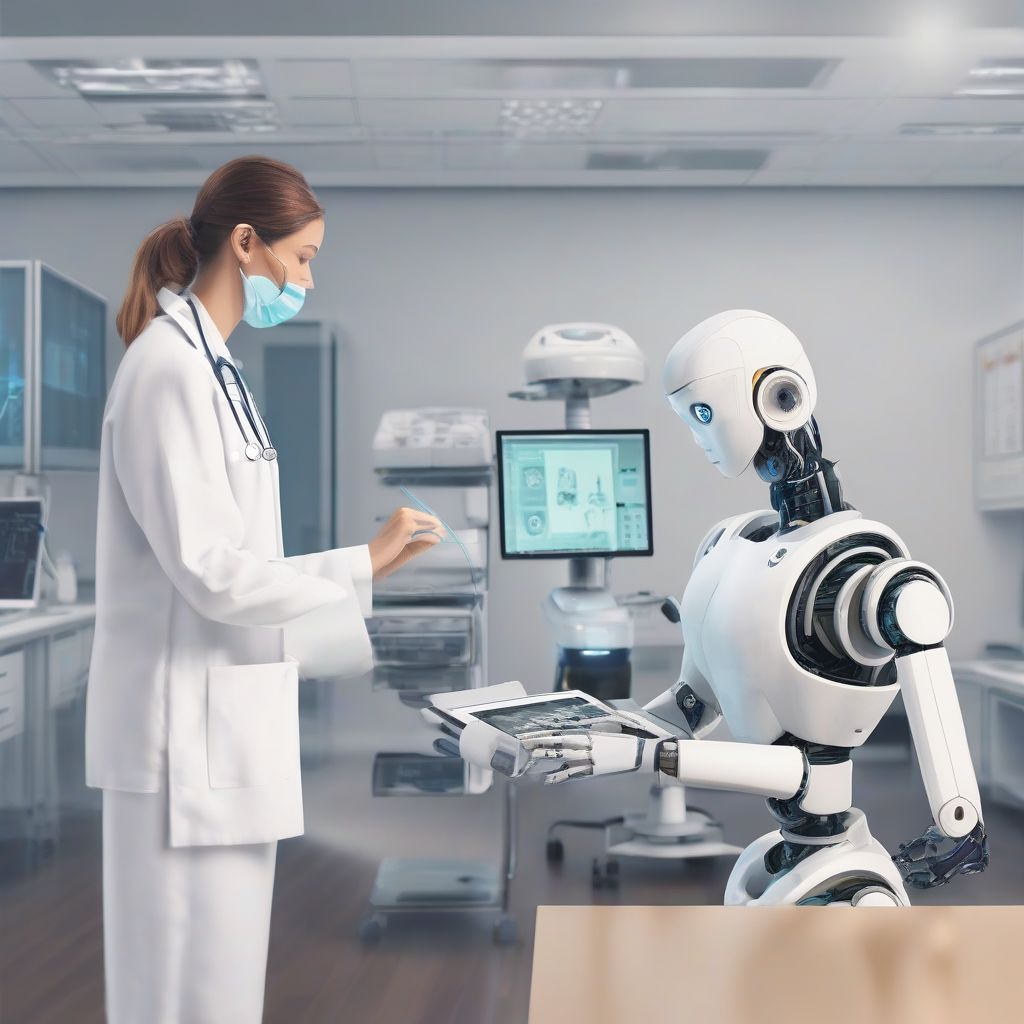Imagine a world where robots seamlessly navigate hospital corridors, delivering medications, assisting surgeons with precision, and even providing companionship to patients. This isn’t science fiction; it’s the rapidly approaching reality of autonomous robots in healthcare. These incredible machines are revolutionizing how we approach patient care, streamlining operations, and enhancing efficiency in ways we never thought possible. As a nutritionist and meal prep coach, I’m fascinated by how technology can improve well-being, and the potential of autonomous robots in healthcare is truly remarkable.
How Autonomous Robots are Transforming Healthcare
From surgery to sanitation, autonomous robots are tackling a wide range of tasks in healthcare settings. Let’s delve deeper into the specific ways they’re making a difference:
1. Streamlining Surgical Procedures with Precision and Accuracy
Imagine the steady hand of a robot assisting in complex surgeries, minimizing errors and improving patient outcomes. Surgical robots, a subset of autonomous robots, are already making waves in operating rooms around the world. These robots, guided by skilled surgeons, provide enhanced precision, flexibility, and control, allowing for minimally invasive procedures with faster recovery times.
 Surgical Robot Assisting Surgeon
Surgical Robot Assisting Surgeon
2. Easing the Load: Robots as Reliable Assistants
Hospitals and healthcare facilities require immense logistical coordination. Autonomous robots are alleviating this burden by taking over tasks like:
- Delivery of Medications and Supplies: Say goodbye to delayed medications or misplaced supplies. Robots ensure timely and accurate delivery, reducing errors and freeing up healthcare workers to focus on patient care.
- Disinfection and Sanitation: Maintaining a sterile environment is crucial in healthcare. Autonomous robots equipped with UV light or disinfectant sprayers can meticulously sanitize rooms and equipment, reducing the spread of infections.
- Patient Transportation: Moving patients between rooms or to different departments can be time-consuming. Robots equipped with navigation systems and safety features are being used to safely and efficiently transport patients, easing the workload on staff.
3. Enhancing Patient Care and Companionship
The role of robots extends beyond logistical tasks; they also contribute to a more patient-centered approach:
- Personalized Monitoring and Assistance: Robots equipped with sensors can monitor vital signs, track medication adherence, and alert healthcare providers to any changes in a patient’s condition.
- Companionship and Social Interaction: For elderly patients or those feeling isolated, robots can offer companionship and social interaction, reducing loneliness and improving mental well-being. Imagine a robot engaging in conversation, playing games, or even leading exercise sessions.
Addressing Concerns: Navigating the Ethical Landscape
The rise of autonomous robots in healthcare also raises valid concerns. It’s essential to address these concerns head-on to ensure responsible and ethical implementation:
- Job Displacement: The fear of robots replacing human jobs is understandable. However, it’s important to view robots as collaborators, not replacements. By taking over repetitive or physically demanding tasks, robots can free up healthcare professionals to focus on complex patient interactions, critical thinking, and emotional support.
- Data Privacy and Security: Robots collect and transmit sensitive patient data, raising concerns about privacy and security breaches. Robust cybersecurity measures and strict data encryption protocols are essential to safeguarding patient information and maintaining confidentiality.
- Ethical Considerations in Decision-Making: As robots become more sophisticated, questions arise about their decision-making capabilities, especially in critical situations. Clear ethical guidelines and robust oversight are crucial to ensuring robots operate safely and ethically within healthcare settings.
The Future of Healthcare is Collaborative
 Healthcare Professional and Robot Collaborating
Healthcare Professional and Robot Collaborating
The integration of autonomous robots into healthcare is still in its early stages, but the potential for positive impact is undeniable. By embracing these technological advancements responsibly and thoughtfully, we can create a future where robots and healthcare professionals work together to provide more efficient, patient-centered, and accessible care for all.
[amazon bestseller=”healthcare robotics”]
